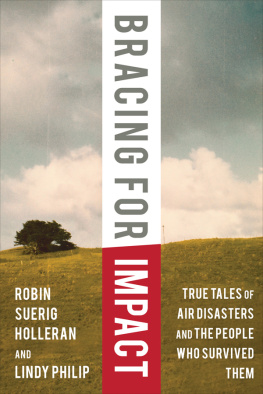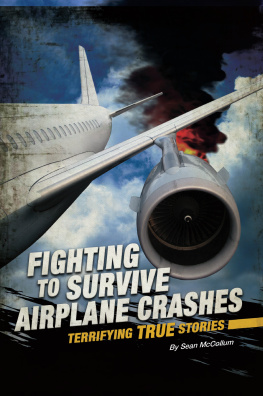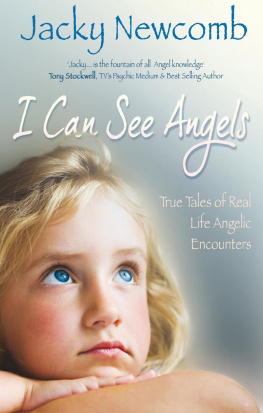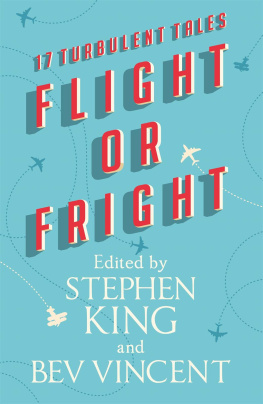Copyright 2015 by Robin Suerig Holleran and Lindy Philip
Foreword 2015 by Skyhorse Publishing, Inc.
All rights reserved. No part of this book may be reproduced in any manner without the express written consent of the publisher, except in the case of brief excerpts in critical reviews or articles. All inquiries should be addressed to Skyhorse Publishing, 307 West 36th Street, 11th Floor, New York, NY 10018.
Skyhorse Publishing books may be purchased in bulk at special discounts for sales promotion, corporate gifts, fund-raising, or educational purposes. Special editions can also be created to specifications. For details, contact the Special Sales Department, Skyhorse Publishing, 307 West 36th Street, 11th Floor, New York, NY 10018 or .
Skyhorse and Skyhorse Publishing are registered trademarks of Skyhorse Publishing, Inc., a Delaware corporation.
Visit our website at www.skyhorsepublishing.com.
10 9 8 7 6 5 4 3 2 1
Library of Congress Cataloging-in-Publication Data is available on file.
Cover design by Rain Saukas
Cover photo by David Shenkin
Print ISBN: 978-1-63450-426-3
Ebook ISBN: 978-1-5107-0032-1
Printed in the United States of America
CONTENTS
FOREWORD
Yesterday, more than 100,000 people boarded airplanes, endured long security lines and uncomfortable flights, and then arrived at their destinations just as they had planned. The day before, and the day before that, hundreds of thousands of people purchased tickets on airlines or boarded private airplanes. Once onboard they read magazines, watched movies, or simply rested until their planes landed safely on runways. Day after day, thousands of successful flights add credence to the extraordinary safety of flight transportation.
Millions of people routinely accept the risk of death from what seem to be simple activities without giving them a second thought. Walking across the street, driving a car on the highway, and even riding a bicycle have exponentially higher risks than flying in an airplane; yet, flying often conjures up the fear of a horrific death in the public imagination.
In order to overcome the fear of flying, you have to fully understand just how safe it is to fly. The probability of dying in a tragic plane accident is so remote it can be difficult to comprehend. I call it the 11 million to 1 rule. The odds of being killed in an airplane accident are less than 1 in 11 million. With those favorable odds even the most skittish of flyers are willing to accept the risk.
However, when an airplanes engines do flame out and the plane plummets to earth from 30,000 feet, you are told to brace for impact. The 1 in 11 million statistic becomes realyou are the unlucky 1!
Bracing for Impact tells the unimaginable personal stories of these unlucky onesthose who have suffered the horror of a deadly plane crash but who were miraculously given a second chance. The stories are captivating and enlightening, providing a perspective only survivors of airplane accidents can share, as well as a perspective that, as an accident investigator, I rarely have the opportunity to hear.
David Soucie
CNN Safety Analyst
Author of Safer Skies , Malaysia Airlines Flight 370 ,
and Why Planes Crash
INTRODUCTION: FLYING INTO FATE
For those who belong to the unenviable club of people who have survived a plane crash, talking about the experience is not always easy. Some, understandably, avoid the topic entirely because it can trigger an eruption of symptoms most commonly associated with post-traumatic stress disorder. Others can discuss the events of the crash with little effect, as though it happened to someone else.
Bracing for Impact is based on a series of interviews with survivors of both small plane and large commercial airline crashes. The book, more than a factual account of the tragedies themselves, explores the impact on victims lives afterward. Despite the circumstances surrounding a crash, very few people walk away from such a life-changing event unscathed in some fashion.
Our intent is not to frighten anyone away from flying. Traveling by plane has evolved from being a special occasion, requiring passengers to dress accordingly, to an everyday part of many peoples lives. There are very few of us who dont hear the faraway drone of a plane overhead at some point during the day.
The ambient buzz from plane engines has become such an integral part of our daily background noise that few even notice it. On the contrary, when the 9/11 attack on New York City and the ash clouds from Icelands volcanic eruptions closed airports in the United States and Europe, respectively, it was the eerie, unexpected silence overhead that caught peoples attention.
Theres also a story behind the personal accounts documented here.
In 2007, as the popularity of Facebook exploded on the Internet, coauthor Lindy Philip was one of millions who jumped at the opportunity to connect with family and friends. But she was also intrigued by how Facebook allowed groups of like-minded strangers to come together.
Having lived through a plane crash herself, Lindy knew there were other survivors in this large virtual world. So, she created a private Facebook group and sat back to see what would transpire.
Slowly, other plane crash survivors found the online group and a loose network began to form. The Facebook group continues to grow, and while most members are not active on a regular basis, those with an unusual shared past support each other by expressing experiences, views, fears, and achievements within a community that shares one commonality.
As a freelance writer and plane crash survivor, Robin Suerig Holleran instinctively knew that there were other stories of survival worth telling. Having recounted her own story numerous times over the years, she realized firsthand that most people are curious to know how one recovers physically and emotionally from such an event.
Going down in a plane and knowing beyond a doubt that your life is about to endand then survivingis both exhilarating and traumatic. The terror is difficult to describe, as is the residual emotion that lives inside nearly all survivors for the rest of their lives. Its hard for anyone who has not been in a similar situation to fully appreciate the effect.
Robins initial account of her harrowing experience received Honorable Mention in the Writers Digest 75th Annual Writing Competition. The contest attracted nearly ten thousand submissions, so to stand out at all was significant. But, during the time she wrote the two thousand-word article, Robin was also high on painkillers and strapped in a body brace from neck to hipand cringes when she reads the essay today.
Initially, when Robin first had the idea for this book in 2011, she reached out to members of Lindys Facebook group and asked if anyone was interested in being interviewed and sharing their experiences. Some agreed and others declined. Sharing was a very personal, and often brave, decision for those who participated.
As preliminary interviews gave Robin a feel for how her writing project might take shape, what struck her was how differently people coped with their tragedies. Robin was ready to send a book proposal to prospective publishers; however, she had a major health event that put the project on hold.
Fast forward to 2014.
Lindy knew that Robin was a writer who was toying with the idea of creating a book. Robin hadnt really thought about it much for a few years, but Lindy was insistent. She said the time was right and her intuitions were spot on.
The two formed a unique collaboration. Robin was the writer and Lindy was the force working behind the scenes to keep the Facebook group active, reaching out to members who were interested in being a part of the project, doing interviews over the next several months, providing editorial support and constructive criticism, being a motivator... and all the other stuff that needs to happen to make a project like this a reality.










